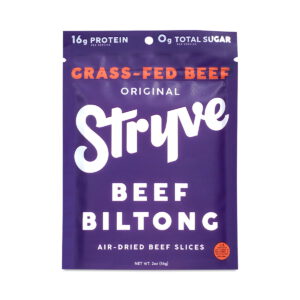- Fitting Healthy Eating into a Busy Lifestyle
- Planning Your Meals in Advance
- Smart Grocery Shopping Tips
- Quick and Nutritious Snack Ideas
- Making Time for Meal Prep
- Staying Motivated and Overcoming Challenges
Grocery shopping can be an adventurous yet daunting experience, especially when you’re trying to fit healthy eating into your already crammed schedule. To make the most of your shopping trip, it’s essential to approach it with a well-structured plan. Start by crafting a comprehensive grocery list based on your meal plan, ensuring that you include a variety of fruits, vegetables, whole grains, and proteins that align with your nutrition goals.
When it comes to choosing healthy foods, look for options that are both nutritious and convenient. Consider the following tips:
- Local Foods: Always prioritize local produce when possible. Not only is it fresher, but it also supports local farmers and reduces your carbon footprint. Visit farmers’ markets for seasonal fruits and veggies.
- Vegan Options: Explore plant-based proteins like lentils, chickpeas, and quinoa. These are budget-friendly and packed with nutrients. Check your local grocery store or online shops for brands that offer vegan-friendly meal kits.
- Budget-Friendly Foods: Stock up on frozen vegetables and fruits. They are often just as nutritious as fresh versions and tend to be less expensive. Canned goods like beans and tomatoes can also be great staples.
- Fitness Foods: If you’re on the go, consider pre-packaged salads, wraps, or protein bars that are low in added sugars. Look for products with whole ingredients listed on the label.
- Organic Choices: If buying organic, focus on the “Dirty Dozen,” a list of fruits and vegetables that tend to retain higher pesticide residues. Choose organic versions for these items when budget allows.
When shopping, always pay attention to ingredient safety and expiry dates. It’s important to check for any contaminants, especially in organic products, as they can still carry risks if mishandled. If you’re purchasing items online, ensure that you are buying from reputable retailers who uphold strict food safety standards.
Finally, if you find yourself short on time, consider platforms that offer grocery delivery services. Many stores have apps that allow you to order directly and select a convenient time for delivery or pickup. This not only saves time but can also help in sticking to your healthy eating goals by avoiding impulse buys.
Incorporating these shopping tips into your routine can make a significant difference in how easily you fit healthy eating into your busy lifestyle, transforming your grocery shopping into a productive and worthwhile endeavor.
Planning Your Meals in Advance
Planning your meals in advance is one of the most effective strategies for maintaining a healthy diet amidst a crammed schedule. By dedicating a small amount of time each week to plan your meals, you can streamline your grocery shopping, reduce stress during busy weekdays, and ensure that you consistently have nutritious options available.
Start by setting aside a specific time each week—often on weekends—dedicated solely to meal planning. During this time, consider your upcoming schedule and any commitments that might affect your meal times. This foresight allows you to choose recipes that align with your busyness.
When selecting meals, aim for a balance between variety and simplicity. Look for recipes that can be made in batches, as this reduces the amount of cooking time required during the week. Dishes like soups, casseroles, and grain bowls are often great choices; they can be prepared in larger quantities and stored in the refrigerator or freezer for later consumption.
To assist in the planning process, you can utilize a meal planner template to visualize your week. Here is an example of a simple weekly meal planner that encourages a balanced approach:
| Day | Breakfast | Lunch | Dinner | Snacks |
|---|---|---|---|---|
| Monday | Overnight oats with nuts | Quinoa salad with chickpeas | Stir-fried vegetables with tofu | Hummus and carrot sticks |
| Tuesday | Smoothie with spinach | Turkey and avocado wrap | Baked salmon with asparagus | Greek yogurt with berries |
| Wednesday | Eggs with spinach | Vegetable soup | Whole wheat pasta with tomato sauce | Mixed nuts |
| Thursday | Chia pudding | Chicken salad | Stuffed peppers with quinoa | Apple slices with almond butter |
| Friday | Yogurt parfait | Sushi rolls | Veggie tacos | Dark chocolate squares |
| Saturday | Pancakes with fruit | Leftover stir-fry | Grilled chicken with broccoli | Popcorn |
| Sunday | Oatmeal with banana | Caprese salad | Vegetable curry | Energy bites |
As you outline each meal, ensure that they incorporate a variety of food groups—lean proteins, whole grains, healthy fats, and plenty of fruits and vegetables. This not only helps in maintaining nutritional balance but also keeps your meals interesting and enjoyable.
To further streamline the process, consider batch cooking certain ingredients that can be used in multiple meals. For instance, cooking a large pot of brown rice or quinoa at the beginning of the week allows you to easily pair these carbs with different proteins and vegetables throughout the week. This can significantly cut down on your cooking time during busy evenings and make it easier to fit healthy eating into your schedule.
Finally, don’t forget to be flexible. Life can be unpredictable, and there may be days when plans change. If you come across an unexpected disruption, it’s okay to swap out meals or adjust portions based on your actual routine. The key is to have a framework to guide you, allowing you to maintain consistency in your healthy eating endeavors despite the challenges of a busy lifestyle.
Smart Grocery Shopping Tips

When it comes to grocery shopping, having a strategic approach can make all the difference in your journey to fit healthy eating into a crammed schedule. Here are a few smart tips to elevate your shopping experience and ensure you bring home not just healthy foods but also budget-friendly options that fit your lifestyle.
Stick to Your List: Begin with a well-researched grocery list that corresponds to your meal plan. This not only helps in avoiding impulse purchases but also minimizes the time spent in the store.
Seasonal and Local Produce: Embrace seasonal fruits and vegetables—these are not only fresher and tastier but often cheaper. Local farmers’ markets are treasure troves for discovering organic and freshly picked produce. Plus, supporting local businesses helps foster your community.
Vegan Delights: If you’re exploring plant-based options, check out whole grains, beans, and nuts. Foods like lentils and chickpeas are excellent sources of protein and can be made into quick and satisfying meals. Look for products certified vegan to ensure they meet your dietary needs.
Smart Swaps: For those on a budget, frozen fruits and vegetables can be your best friends. They’re just as nutritious and can be more affordable than their fresh counterparts. Additionally, buying in bulk—especially for staples like oats, rice, and legumes—can save you significant money in the long run.
- Frozen Foods: Perfect for quick meal prep. Choose options with no added sugars or salts for healthier choices.
- Canned Goods: Beans, tomatoes, and fruit can be real staples in a busy household. Just be sure to look for low-sodium varieties.
Health-Conscious Choices: Always scan labels while shopping. Look for whole ingredients and avoid items with high sugar content or artificial additives. If you’re focused on fitness, consider adding snack bars or protein powder that aligns with your nutritional goals. However, research helps ensure the products fit your dietary requirements.
Organic Shopper Advisory: Pay close attention to products marked as organic. While they tend to be healthier, they can also be more expensive. Focus your organic purchases on the “Dirty Dozen”—fruits and veggies that retain the highest pesticide levels. For other items, conventional options are usually acceptable.
Online Shopping Considerations: If you find yourself short on time, online grocery shopping can save the day. Opt for reputable retailers with solid reputations, ensuring they prioritize food safety standards. Look for features like customer reviews or ratings and be wary of items that seem out of stock or excessively marked up.
Delivery Services: Embrace grocery delivery services that allow you to select a convenient time for delivery. This not only saves time but also often provides deals that can support your budget. However, be sure to check for delivery fees and minimum order rules to avoid unexpected costs.
Remember, shopping efficiently and thoughtfully can significantly impact your ability to fit healthy eating into your busy lifestyle. By employing these strategies, you can turn grocery shopping into an enjoyable and productive task that supports your health goals.
Quick and Nutritious Snack Ideas
Snacking often gets a bad reputation, especially when you’re trying to fit healthy eating into a crammed schedule. However, having quick and nutritious snacks on hand can actually support your health goals and keep your energy levels stable throughout the day. By carefully selecting and preparing your snacks, you can maintain a balanced diet without sacrificing convenience. Here are some ideas and tips to help you incorporate wholesome snacks into your routine:
First, consider the power of fruits and vegetables. They are not only loaded with vitamins and minerals, but they also provide natural sugars and fiber that can help curb your hunger. Pre-cut veggies like carrots, cucumbers, and bell peppers paired with hummus or a yogurt dip make for a quick and satisfying snack. Fruits like apples, bananas, or berries require no preparation and can easily be tossed into your bag for on-the-go munching.
Another excellent option is to include whole grains and proteins in your snacks. Whole grain crackers or rice cakes topped with almond butter or Greek yogurt can keep you feeling fuller for longer. If you’re at home, make a simple trail mix by mixing nuts, seeds, and a small amount of dried fruit. This not only provides a balance of protein, carbs, and healthy fats but is also a portable option for busy days.
For those with a bit more time, batch cooking healthy snacks at the beginning of the week can pay off later. Energy bites, made from oats, nut butter, and honey, are simple to prepare and can be stored in the fridge for quick access. You could also try baking a batch of whole grain muffins or protein bars that can serve as hearty snacks throughout the week.
“Healthy eating is a way of life, so it’s important to establish a routine that is simple, realistically, and fun.” – Horace
If you’re looking for something more substantial, whip up some homemade popcorn lightly seasoned with your favorite spices. Popcorn is a whole grain and can be a great low-calorie snack; just be mindful of how much butter or salt you add. Similarly, making veggie chips (like kale or sweet potato) allows you to enjoy crunch without the guilt associated with traditional chips.
Finally, never underestimate the convenience of yogurt parfaits. Layer yogurt with your favorite granola and fresh or frozen fruits for a nutritious snack that feels like a dessert. This is not only tasty but also gives you a good dose of probiotics, proteins, and essential nutrients.
By integrating these quick and nutritious snack ideas into your daily routine, you can effectively fit healthy eating into your busy life while ensuring you have enjoyable and satisfying options to keep your energy high and cravings at bay.
Making Time for Meal Prep
 Making time for meal prep requires prioritization and a little creativity in your schedule. It is essential to carve out a specific time each week to prepare meals that align with your nutritional goals while fitting seamlessly into your busy lifestyle. One of the most effective strategies is to dedicate at least one day during the weekends for food preparation, turning it into a self-care ritual where you not only cook but also reflect on your dietary choices.
Making time for meal prep requires prioritization and a little creativity in your schedule. It is essential to carve out a specific time each week to prepare meals that align with your nutritional goals while fitting seamlessly into your busy lifestyle. One of the most effective strategies is to dedicate at least one day during the weekends for food preparation, turning it into a self-care ritual where you not only cook but also reflect on your dietary choices.
Start with organizing your kitchen. Clean your cooking space, gather your favorite tools, and ensure your storage containers are ready. This simple act can enhance your cooking experience and make meal prep feel less daunting. When you have a clean, organized kitchen, it becomes easier to focus on preparing nutritious meals, reducing the chances of feeling overwhelmed when it’s time to cook.
Consider batch cooking core ingredients that can serve as the foundation for multiple meals throughout the week. For example, you might cook a large quantity of brown rice, quinoa, or whole wheat pasta; roast a variety of vegetables; or grill chicken breasts or tofu. These versatile staples can be used in different combinations, allowing you to create diverse meals rapidly. Filling your fridge with prepped ingredients not only saves time but also reduces the stress of deciding what to eat on busy nights.
Embrace the power of one-pot meals. These are lifesavers for time-strapped individuals who want to fit healthy eating into their crammed schedules. Dishes like stir-fries, casseroles, or hearty soups can be cooked in a single pot or pan, streamlining not only cooking but also cleaning. Look for recipes that can be adapted based on the ingredients you have on hand, which encourages you to use what you already have rather than make extra trips to the grocery store.
Moreover, it can be beneficial to involve family or friends in the meal prep process. Cooking together not only makes the task more enjoyable but also fosters a shared commitment to healthy eating. It can turn into a fun activity where you can explore new recipes, share ideas, and motivate each other to adopt healthier habits.
Finally, once your meals are prepared, use clear labeling for your containers, noting the contents and the date they were made. This practice not only helps in managing your meals but also prevents food waste, reminding you of what is ready to eat and urging you to consume things while they’re still fresh.
Remember, meal prep doesn’t have to be overwhelming; with a little time and practice, it can become an enjoyable part of your weekly routine that empowers you to maintain a balanced diet.
- What is meal prep, and why is it essential?
- Meal prep involves preparing meals or meal components in advance to make healthy eating more convenient throughout the week. It’s essential because it saves time, reduces stress, and helps maintain a healthy diet even during busy periods.
- How can I start meal prepping if I have a crammed schedule?
- Begin by dedicating a specific time each week for meal prep, such as on weekends. Focus on simple recipes that can be made in large batches, and prep versatile ingredients that can be mixed and matched throughout the week.
- What types of meals are best for meal prepping?
- One-pot meals, casseroles, soups, and grilled proteins are ideal for meal prep. They can be cooked in larger quantities and stored for later use, providing a variety of options throughout the week.
- How long can I store prepped meals in the fridge?
- Most prepped meals can be stored in the refrigerator for about 3 to 4 days. If you want to keep them longer, consider freezing individual portions for later use.
- Can I meal prep for snacks as well?
- Absolutely! Preparing healthy snacks, such as cut-up fruits and veggies, energy bites, or yogurt parfaits, can help you stay on track with your nutrition goals throughout the week.
- Do I need special containers for meal prep?
- While you don’t need anything fancy, having several clear, airtight containers is highly beneficial. They help you see what’s inside and keep your meals fresh and organized.
- Is meal prepping cost-effective?
- Yes, meal prepping can save money by reducing food waste and minimizing impulsive grocery purchases. Planning meals allows you to buy ingredients in bulk and use them efficiently throughout the week.
Staying Motivated and Overcoming Challenges
Maintaining motivation while managing the challenges of incorporating healthy eating into a crammed schedule can be tricky, but with the right strategies, you can keep your spirits high and your goals aligned with a nutritious lifestyle. Start by setting clear and achievable health goals that resonate with your personal values and lifestyle. Whether you want to incorporate more plant-based meals, lose weight, or simply feel more energized, having a specific goal can help guide your choices.
A great way to stay on track is to develop a supportive environment both at home and in your community. Surround yourself with people who share similar health goals, whether through friends, family, or online communities. Sharing your aspirations and progress can motivate you to stick to your healthy eating plans. If possible, join local groups or classes that focus on health and wellness; the accountability and camaraderie can be incredibly motivating.
In addition, consider rewarding yourself when you hit certain milestones. These rewards could be anything from treating yourself to a new cookbook filled with healthy recipes to indulging in a spa day or seeing a movie. The key is to choose rewards that do not revolve around food so that you don’t undermine your progress.
Utilizing tools and resources can also keep your motivation levels high. Meal planning apps and online recipe collections can simplify your process and introduce you to new ideas, making healthy eating feel less like a chore and more like an adventure. Try exploring various recipes that fit your lifestyle—whether you’re a busy professional, a parent, or a student, there are countless quick, healthy options to choose from.
Incorporating self-care activities that align with your health journey can also bolster your resolve. Spend time preparing meals as a form of relaxation rather than viewing it as an obligation. Put on your favorite podcast or playlist while cooking; this will make meal preparation feel enjoyable rather than burdensome. Additionally, setting a few minutes at the beginning or end of the day to reflect on your progress can help you stay focused on your journey.
Another beneficial approach is to keep a food journal. Recording what you eat can make you more accountable for your choices and help identify patterns in your eating habits. When you see how far you’ve come, it will reinforce your commitment to healthy eating.
Lastly, embrace imperfections. The journey to fit healthy eating into your schedule may not always be smooth. Recognize that there will be ups and downs, and that’s completely normal. Adapt and make adjustments as necessary; even small changes can lead to significant impacts over time. Stay focused on progress, not perfection. Remember, the ultimate goal is to create a sustainable, healthy lifestyle that fits seamlessly into your busy life.
Utilizing a combination of these strategies can help you maintain motivation and navigate the challenges that come with fitting healthy eating into your already busy life. The journey will always be unique to you, and finding what works best can make all the difference.
New Customers Offer!
Free Gift for the new customer
$24 Value, When You Subscrib Visit Thrive Market












